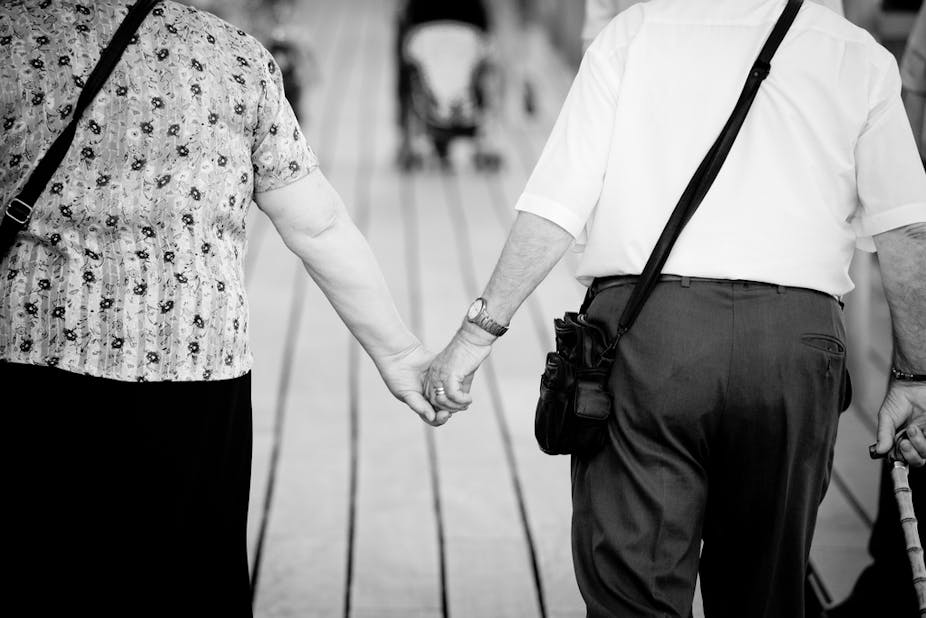You wouldn’t be alone in feeling frustrated, isolated, devalued and depressed if you were suddenly labelled “asexual” at your next birthday. Millions of older Australians feel the same way when they’re suddenly assumed to be asexual at their 65th birthday.
But research shows that older people are sexual and that sexual expression is important for emotional well-being as we age.
Changing agenda
Aged-care providers want to understand how to manage sexually challenging behaviour in their facilities. Responding to sexual behaviour by clients with cognitive impairment is of particular concern.
In response, educators have focused on the rights of older people to sexuality and affirmative responses to sexual expression. Much education aims to help service providers understand that the challenge is not just determining the capacity of an older person to consent to sexual activity, but also putting aside their own values and beliefs in order to meet client needs.
This focus on affirmative responses to sexual expression, particularly for clients with cognitive impairment, is welcome. Other developments include recognition of sexual, and gender, diversity and the need to prevent sexual assault. These changes are significant in their own right but, collectively, they hint at the emergence of a new agenda that recognises the rights of older people to sexual health.
Recognition of diversity
Perceptions of older people as asexual have resulted in failure to recognise that they are sexually and gender diverse. But significant reforms followed the 2012 release of the Productivity Commission’s Caring for Older Australians report.
The report outlined the discrimination encountered by older lesbian, gay, bisexual, transgender and intersex (LGBTI) people – and the negative impact this had on their physical and mental health. It noted that aged-care services need to ready themselves to meet the needs of LGBTI people.
In response, the federal government has amended the Aged Care Act to include older LGBTI people as a special needs group, allocated funding for training and commenced development of a National Strategy for LGBTI Ageing and Aged Care. These changes will greatly improve the health and well-being of older GLBTI people.
Recognition of sexual assault
The myth of asexuality in ageing has also contributed to a delay in recognising and preventing the sexual assault of older women. Data on rates of sexual assault of older women have been collected in residential aged care since 2009 – but numbers are all we have.
According to the Report on the Operation of the Aged Care Act for the 2011-2012 period, there were 344 reports of “alleged or suspected unlawful sexual contact”.
Without evidence of the factors that contribute to the vulnerability of older women to sexual assault, primary prevention is impossible. Thankfully, reform in this area began last year when the federal government funded a group at the Australian Research Centre in Sex, Health and Society at La Trobe University to conduct research and education in this area.
The researchers will interview older women, their families and service providers about sexual assault, then develop resources and information to prevent sexual assault. Early data from the study indicates that perceptions of asexuality is likely to be a contributing factor.
Indeed it’s clear is that perceptions of older people’s asexuality have resulted in serious failures – in recognising the sexual and gender diversity of older people and preventing sexual assault. Current reforms provide a welcome opportunity to change this.
We need to recognise the sexual rights of older people and to promote their health and well-being. None of us would want to be labelled asexual just because of our age.

